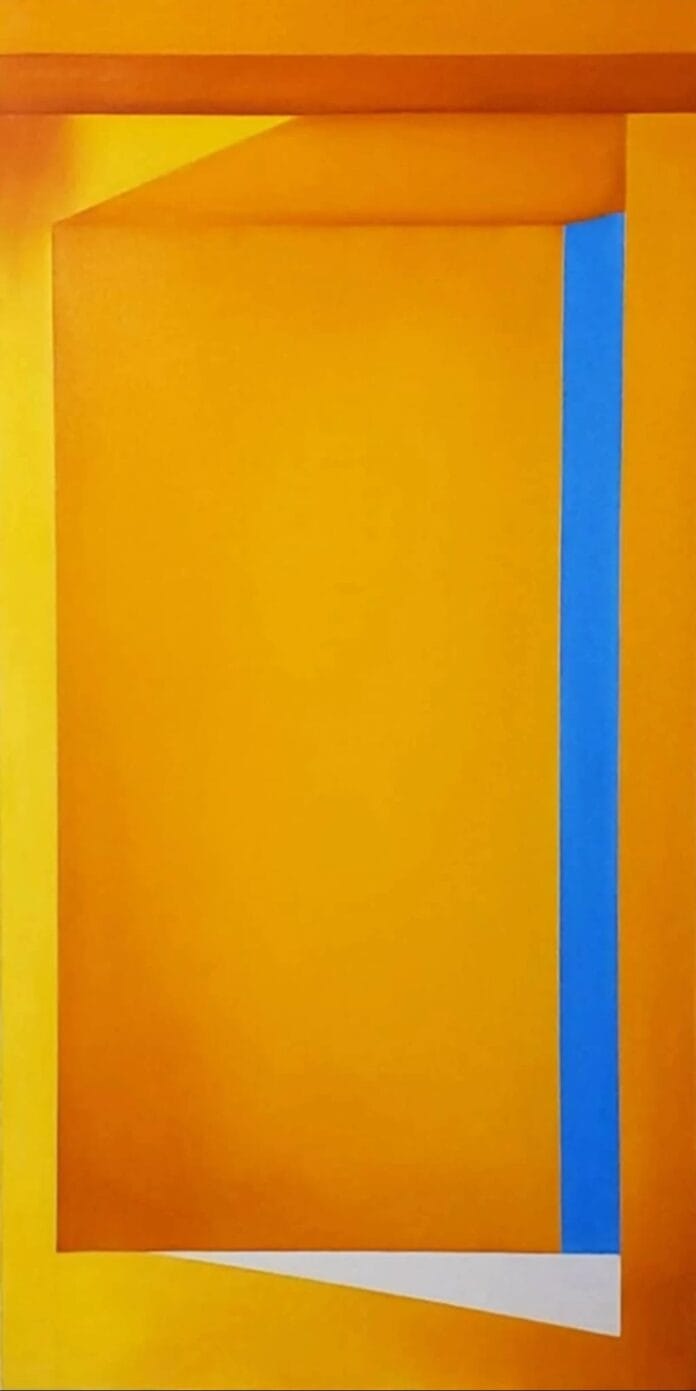Karen Clarkson is a distinguished American contemporary artist whose vivid compositions marry bold color with elemental form. Born in Detroit, Michigan, Clarkson’s creative vision was shaped not only by her Midwestern roots but also by a lifetime of travel and cultural immersion. Her journeys across continents exposed her to a spectrum of architectural styles, landscapes, and artistic traditions, all of which find expression in her geometric, deeply emotive paintings.
Working primarily in oils, Clarkson channels the language of modernism. She cites influences such as Mark Rothko, Barnett Newman, Anne Truitt, and Donald Judd. These pioneers of abstract expressionism and minimalist art left lasting impressions on her artistic development, inspiring her to explore the intersection of form and emotion. However, Clarkson’s work is not about imitation. It reflects a personal evolution that is rooted in the present and shaped by her unique perspective.
The Language of Color and Form
Clarkson’s paintings are defined by her bold use of color and structured composition. Whether it’s the serene weight of a blue plane, the vibrant assertion of a red rectangle, or the gentle tension of asymmetrical balance, her work engages viewers with a sense of rhythm and clarity. Her canvases are more than visual experiences. They are emotional landscapes that invite introspection and connection.
Central to Clarkson’s artistic mission is the creation of works that evoke a strong emotional response. She does not want her paintings to be viewed passively but experienced deeply. She aims for her work to allow the viewer to bond with it on an intimate level. This belief guides her creative process and results in works that are both meditative and filled with energy.
A Global Influence
Clarkson’s art reflects the diversity of the world she has explored. Extensive travel has given her a wide visual vocabulary. From the intricate facades of European cathedrals to the minimalist clarity of Japanese architecture, every structure and culture she encounters contributes to her evolving visual language. Her interpretations often take form as geometric shapes, blocks of color, and outlines of imagined spaces that feel both timeless and contemporary.
This sensitivity to architecture and structure distinguishes her work. Instead of offering literal depictions, she captures the essence of places she has experienced. Through this process, she builds a connection between abstraction and reality, allowing viewers to sense the emotional resonance of distant landscapes and cultural spaces.
The House That Vincent Built: A Tribute to a Kindred Spirit
Among Clarkson’s recent works, The House that Vincent Built stands out as a deeply personal and poetic piece. Inspired by Vincent van Gogh’s The Yellow House, this painting is created on a shaped canvas that resembles a doorway. The unique form helps create an immersive, three-dimensional experience for the viewer.
Clarkson reimagines Van Gogh as a living presence. She envisioned him standing near his doorway, peering out into the peaceful blue sky, thinking of his next painting. This imagined moment of reflection and anticipation becomes the emotional core of the work.
Using bold colors and simplified forms, Clarkson builds a space that feels both grounded and uplifting. The shaped canvas plays a dual role. It references the literal architecture of Van Gogh’s house while also serving as a symbolic doorway, inviting the viewer to step into an artistic narrative. The result is a piece that feels human and alive, filled with both memory and imagination.
Bridging Time Through Artistic Dialogue
In The House that Vincent Built, Clarkson achieves a rare kind of artistic dialogue. She responds to Van Gogh’s legacy not with replication, but with conversation. The painting reflects her contemporary voice while paying quiet homage to a fellow artist’s enduring spirit.
The shaped canvas strengthens her exploration of space and presence. Rather than merely housing an image, the canvas itself becomes part of the message. It represents a passageway into history, creativity, and shared artistic vision. Through this piece, Clarkson blurs the boundary between object and environment, encouraging viewers to enter and reflect.
Recognition and Reach
Karen Clarkson’s art has gained recognition around the world. Her works are held in private and public collections internationally, and she has been featured in various articles, exhibitions, and galleries across the East Coast of the United States. Her ability to combine abstraction with emotional depth continues to resonate with collectors, critics, and casual viewers alike.
Each painting by Clarkson reflects her belief in the transformative power of visual experience. Her compositions function as spaces we can inhabit mentally and emotionally, offering clarity, depth, and a sense of connection.
Conclusion: A Vision of Connection and Clarity
Karen Clarkson continues to pursue her artistic path with purpose and curiosity. Her work honors the traditions of modernism while pushing into new territory. With her bold use of color, geometric structures, and deep emotional insight, Clarkson offers viewers more than a painting. She offers a moment of reflection, a sense of presence, and a lasting impression.
Whether one stands before a quiet color field or steps through the doorway of The House that Vincent Built, it becomes clear that Karen Clarkson’s art is not only to be viewed. It is to be experienced.


